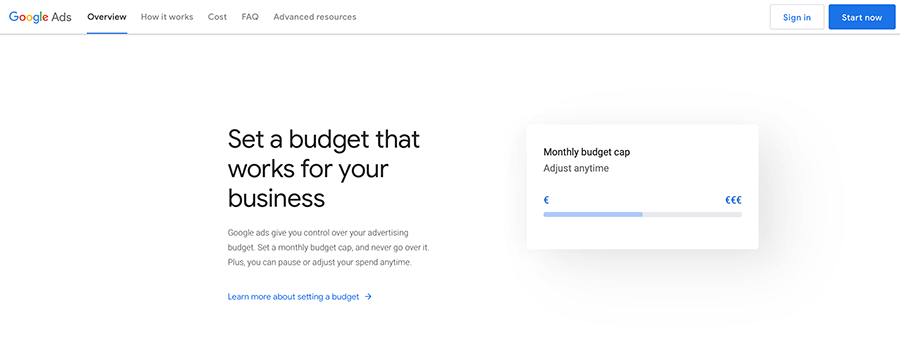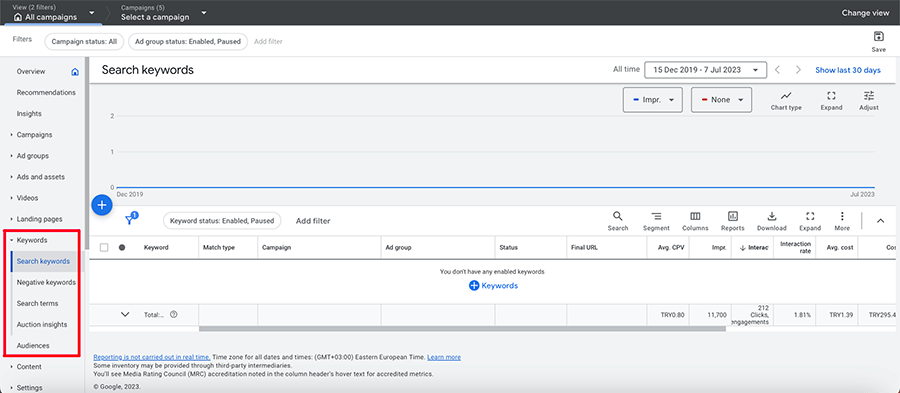Unlocking Success: How to Track and Analyze Keyword Performance in Google Ads
In the ever-evolving world of digital advertising, tracking and analyzing keyword performance is crucial for optimizing your Google Ads campaigns and achieving maximum results. Understanding how your keywords perform allows you to make data-driven decisions, refine your bidding strategy, and maximize the return on your advertising investment. In this blog post, we will guide you through the process of tracking and analyzing keyword performance in Google Ads, empowering you to unlock success and drive your campaign to new heights.

The Importance of Keyword Performance in Google Ads
Keywords are the building blocks of successful Google Ads campaigns. They determine when and where your ads appear, making them a critical component of your advertising strategy. Monitoring and analyzing keyword performance enables you to evaluate the effectiveness of your keywords, identify areas for improvement, and optimize your campaign to reach your target audience effectively.
Explore our comprehensive guide on
How To Conduct A Competitor Keyword Analysis . Learn how to identify high-impact keywords, uncover search trends, and discover new keyword opportunities to optimize your Google Ads campaigns.
Understanding Keyword Metrics
Before diving into the process of tracking and analyzing keyword performance, let’s familiarize ourselves with the key metrics that provide insights into keyword performance:
1. Impressions
Impressions indicate how many times your ads were displayed to users in the Google Search Network or Display Network. Higher impression counts suggest that your keywords are triggering ad impressions and reaching a broader audience.
2. Clicks
Clicks represent the number of times users clicked on your ads. Monitoring clicks allows you to evaluate the effectiveness of your ad copy and keyword targeting. Higher click-through rates (CTR) indicate that your ads are relevant and compelling to users.
3. Click-Through Rate (CTR)
CTR is the percentage of users who clicked on your ad after seeing it. It is calculated by dividing the number of clicks by the number of impressions. A high CTR indicates that your ads are engaging and resonating with users.
4. Conversions
Conversions measure the number of desired actions completed by users, such as making a purchase, submitting a form, or signing up for a newsletter. Tracking conversions allows you to determine which keywords are driving the most valuable actions for your business.
How to Track and Analyze Keyword Performance in Google Ads
Now, let’s dive into the step-by-step process of tracking and analyzing keyword performance in Google Ads:
Step 1: Sign in to Your Google Ads Account
Access your Google Ads account by visiting
ads.google.com and entering your login credentials.

Step 2: Navigate to the Keywords Tab
Select the campaign or ad group for which you want to track keyword performance. Then, navigate to the “Keywords” tab within the campaign or ad group settings.

Step 3: Review Keyword Metrics
Review the keyword metrics, such as impressions, clicks, CTR, and conversions. Analyze the performance of each keyword to identify patterns, trends, and areas for improvement.
Step 4: Utilize Filters and Segments
Apply filters and segments to further analyze keyword performance. You can filter keywords by specific metrics, such as high impressions with low clicks, to identify underperforming keywords that may require optimization.
Step 5: Identify High-Performing Keywords
Identify keywords that are driving significant clicks, conversions, and revenue. These high-performing keywords indicate areas of success and can guide your bidding and optimization strategies.
Step 6: Optimize Underperforming Keywords
Identify keywords with low impressions, clicks, or conversions. These underperforming keywords may require optimization or bid adjustments. Consider refining your keyword list, improving ad relevancy, or adjusting bid amounts to enhance their performance.
Step 7: Monitor and Iterate
Continuously monitor keyword performance, make data-driven adjustments, and iterate on your campaign. Regularly assess the impact of changes on keyword performance and refine your strategy to align with your advertising goals.
Final words
Tracking and analyzing keyword performance in Google Ads is a crucial aspect of optimizing your campaigns and driving success. By monitoring key metrics, identifying high-performing keywords, and making data-driven adjustments, you can refine your bidding strategy and maximize the effectiveness of your advertising efforts.
Remember to regularly evaluate your keyword performance, iterate on your campaign, and stay updated with the latest trends and strategies in keyword optimization. By continuously improving your keyword selection, ad relevance, and bid management, you can stay ahead of the competition and achieve remarkable results.
Learn how to optimize your keyword bids for better performance by exploring our in-depth blog post on Bid Adjustment on Google Ads: A Comprehensive Guide. Discover techniques for adjusting bids, setting bid modifiers, and leveraging automated bidding strategies to maximize your ROI.
Curious about the ins and outs of digital marketing?
Subscribe to our email newsletter for the latest digital marketing insights, and also make sure to read our blogs. See you next time!






